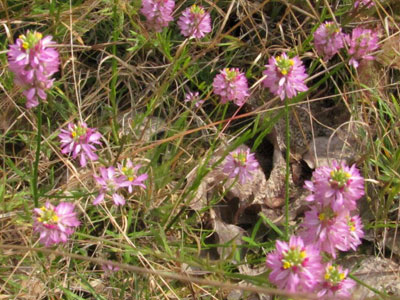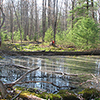Conservation Science
Protecting Pennsylvania's Plants and Animals
State Line Serpentine Barrens
A 60-square-mile area that includes southern Lancaster, Chester and Delaware counties in Pennsylvania is one of the only places in the United States where a unique metamorphic rock called serpentinite (or serpentine) occurs and can be found close to the Earth’s surface. Globally rare plant communities known as serpentine barrens have developed within this area of unusual rock and soils that straddles the Pennsylvania-Maryland border. This area is collectively known as the State Line Serpentine Barrens.



Unique Habitats
Habitats
 Dry, generally open habitats are common traits of barrens in Pennsylvania. However, the close affiliation with serpentine bedrock makes the plant communities in this area unique, even among barrens. Serpentine rock contains numerous minerals, including nickel, magnesium and chromium, that were historically useful in the refractory and alloy production industries because of their stability at high temperatures. However, these minerals are toxic to many plants.
Dry, generally open habitats are common traits of barrens in Pennsylvania. However, the close affiliation with serpentine bedrock makes the plant communities in this area unique, even among barrens. Serpentine rock contains numerous minerals, including nickel, magnesium and chromium, that were historically useful in the refractory and alloy production industries because of their stability at high temperatures. However, these minerals are toxic to many plants.
The weathering of this rock produces thin, poor soils that - coupled with these minerals - creates a harsh environment for many common plant species. The unusual and rare plant species that have adapted to these conditions form the foundation for what makes these barrens globally rare ecological communities.
Rare Plants and Animals
The serpentine aster (Symphyotricum depauperatum) is an endemic plant to the serpentine barrens of Pennsylvania and Maryland and is one of Pennsylvania’s rarest and globally significant plants. The round-leaved fame flower (Phemeranthus teretifolius) is another Pennsylvania rare plant found only in serpentine barrens. However, it has a wider global distribution, reaching its northern limit in Pennsylvania and extending into Georgia and Alabama. Other rare plants like Heller’s witchgrass (Dichanthelium oligosanthes) and few-flowered nutrush (Scleria puaciflora) are common in the barrens.
Rare animals, particularly butterflies and moths, abound in these habitats and include species like dusty skipper, the cobweb skipper and the juniper hairstreak. Nottingham Barrens, a managed serpentine barrens owned by Chester County, supports 29 rare plant and 38 rare animal species.



Habitat Threats and Management

The serpentine barrens are mosaics of grasslands, pitch pine woodlands and scrub habitat which were historically dependent upon fire and grazing to remain open. Aside from development which has claimed many acres of prime habitat, the succession to woody vegetation (trees and shrubs) is the biggest threat facing these plant communities.
An increasingly dense tree canopy restricts light that can lead to a decline in the populations of many of the barrens’ rarest plants that are adapted to more open settings. Fortunately, a number of these areas are owned by state, county and private conservation groups which are regularly monitoring and stewarding the barrens in order to keep these communities from becoming denser woodlands and forests. In addition to the resources that the owners of these barrens offer, volunteer groups such as the Friends of the State Line Serpentine Barrens are critical in helping to maintain these areas.
The Pennsylvania Natural Heritage Program has inventoried these areas, added to the list of rare species and provided management recommendations through the Natural Heritage Inventories for Chester and Lancaster counties. Our scientists also worked with the Pennsylvania Department of Conservation and Natural Resources Bureau of Forestry to provide documentation and management recommendations for a preserve within the barrens, Goat Hill Barrens, in Chester County. As consistent with our recommendations for this and other barrens, the BOF is using prescribed fire to help manage this designated natural area.






